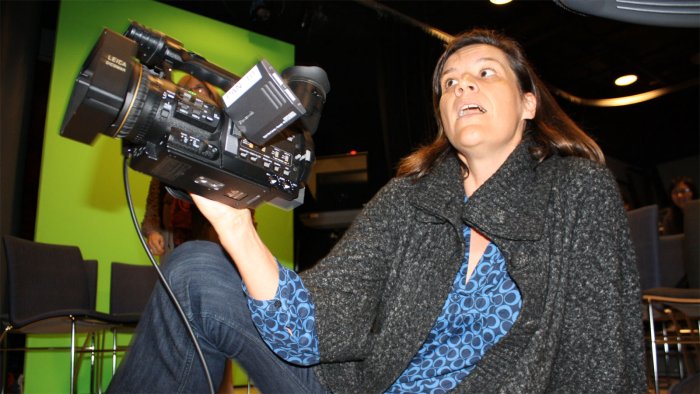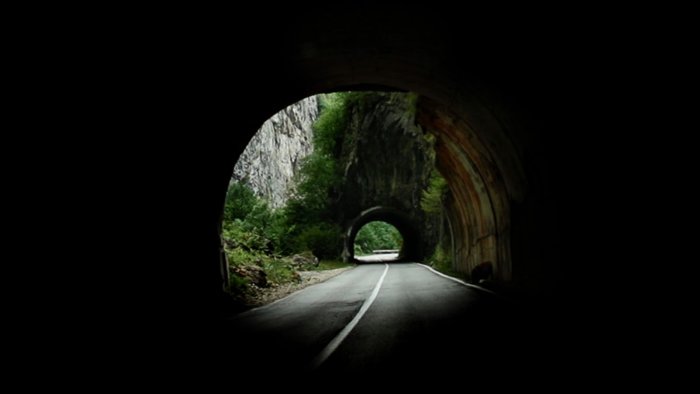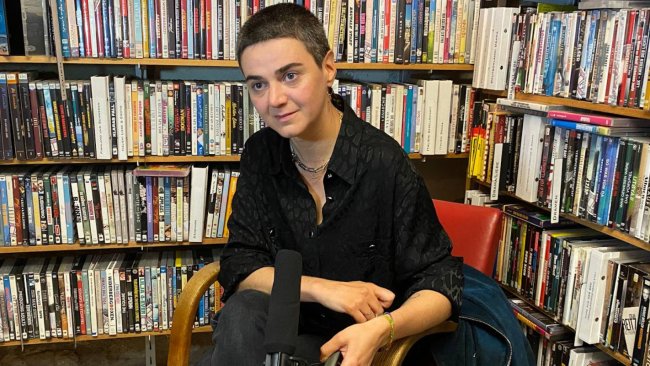Cameraperson
[…] She becomes a director, using her own footage to tell us something about the person behind the camera, about her emotions and experiences. «Cameraperson» doesn’t reveal some unprecedented filming secret, but it is perhaps more significant as a contribution in the self-portrait genre.
[…] The nicest aspect of the different themes is that we see them emerge throughout the film through a fine construction of associations between the excerpts. Nels Bengerter’s editing deserves the biggest praise for this, as it is certainly the most convincing aspect and strength of «Cameraperson».
[…] Here, the cameraperson is a tool to stimulate memory and create memory at the same time. The entire collection of excerpts in «Cameraperson» can be thought of as a memory reservoir, where the need to remember (or to forget…) constitutes the identity of Kirsten Johnson as cameraperson and as person tout court.
Text: Giuseppe Di Salvatore
The title of this film is a programme of its own: Kirsten Johnson doesn’t want to be simply a cameraman, or camerawoman, but she puts forward the personality behind the camera: her personality. Through her work, she has experienced special and moving situations that she now considers worthy of being communicated through the related footage.
The first misunderstanding to avoid: she cannot reveal to us the soul of the camera, the special point of view of the camera. The camera is an instrument and, as such, has nothing to say. Only another camera, another instrument, would be able to focus on the camera as such. Similarly, only another cameraman would be able to focus on the cameraman as person. So, what does Johnson do by putting her personality in the foreground? She just becomes a director, using her own footage to tell us something about the person behind the camera, about her emotions and experiences. Cameraperson doesn’t reveal some unprecedented filming secret, but it is perhaps more significant as a contribution in the self-portrait genre.
In fact, the images we see are mostly hybrid, because some of them are meant to be parts of documentary films while others are just traces of the work of the cameraperson. In this way, we become sensitive to the presence and absence of the camera, to the presence and absence of the cameraperson, to the degree to which she is hidden behind the camera or present as a person, at which point we raise the question of the relationship between the cameraperson and her filmed subjects. Here we can observe the same hybrid status between a professional and personal relationship. This is nothing but the big (and old) ethical question of documentary filming, or the question of the presumed neutrality of the camera gaze; whether necessary or idealized and impossible.
In this respect, Kirsten Johnson seems to favour a certain empathy toward her subjects, or at least this is one of the main points of Cameraperson insofar as it is a selection of moments of emotional and personal experiences that she herself has had behind the camera. So, if Cameraperson is a way for Johnson to express herself, the selection she provides in this film shows her as a person who is particularly sensitive to big dramas and tragedy. The suffering of war victims, the shocking reality of torture and massacres, the thrilling risk of forbidden filming: many excerpts speak of strong emotions and tears, concerning her subject and/or herself. Sometimes it is difficult to distinguish these strong emotions from the mere adrenalin of the reporter or the shocking pleasure of the journalist with a propensity for the macabre.
If this seems to be a weak aspect of the film, Cameraperson is hopefully not so cheap. On the contrary, it grows in complexity and is able to use many registers and to introduce many themes. First of all, there are some excerpts that put the emotivism of journalism into question, as is the case with the Syrian activist discussing the infamous picture of the dead child on the Turkish beach. The relationship between the cameraperson and the director constitutes another important theme – although it could have been more developed. In any case, the nicest aspect of the different themes is that we see them emerge throughout the film through a fine construction of associations between the excerpts. Nels Bengerter’s editing deserves the biggest praise for this, as it is certainly the most convincing aspect and strength of Cameraperson.
Among the different themes emerging throughout the film, I would stress at least two that seem to take a decisive role. One is the reflection on the importance and difficulty of mourning, and on the function of the image and the camera in this process. To this respect, Kirsten Johnson joins a widespread practice in documentary filming, which is to use it as a therapeutic tool; a way of making something explicit and then to partly remove the untold suffering. The other theme can clearly be connected to the former and concerns the memory and its connection to the recording of the camera. Here, the cameraperson is a tool to stimulate memory and create memory at the same time. The entire collection of excerpts in Cameraperson can be thought of as a memory reservoir, where the need to remember (or to forget…) constitutes the identity of Kirsten Johnson as cameraperson and as person tout court. In this sense, the excerpts of her mum suffering from Alzheimer’s disease can be considered the backbone of the film: from her mother’s struggle with memory until the family’s mourning process after her death, these scenes resume all the meaningfulness of Cameraperson as an identity project, as a professional and personal self-portrait.
This article contains a third-party video. If you would like to watch the video, please adjust your settings.
Watch
Screenings at the festival Visions du Réel Nyon 2022






